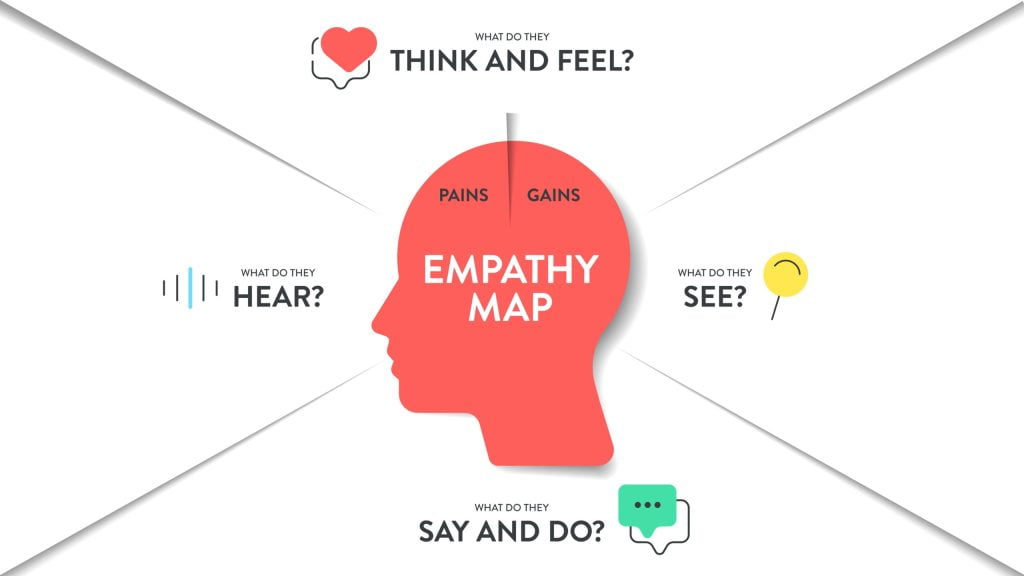The Metaverse for Sustainable Living
Table of Contents:
The Metaverse has created a whole new reality that combines the world around us with augmented reality. This allows us to exist partially outside the physical world, creating many new possibilities for how we live, work, and play. For this reason, the Metaverse is one of the fastest-growing technologies and will become an important part of our future. It is worth asking, therefore, how it can help us to deal with the question of sustainable living.
Did you know that as many as 93% of global consumers say they are interested in the Metaverse, and 51% have a desire to use it? Business representatives are also showing an interest, with nearly 70% of them believing that the Metaverse can improve the customer experience and become a key differentiator for them, according to a survey conducted by Capgemini. But will there be room for sustainability in this virtual world? Is sustainability in the Metaverse even possible? Let’s find out!
What do we know about the Metaverse?
According to various sources, the Metaverse market could be worth as much as $8 billion by 2030, with annual growth estimated at nearly 50%. This is a vast potential, so we can expect a fierce battle between companies vying for the best possible position in the Metaverse. With this in mind, many have questioned whether this new reality can develop sustainably and support sustainable living.
What does sustainability mean?
Sustainability is the concept of economic, social, and environmental development, which aims to meet the needs of the current population, as well as those of future generations as well. The goal is to fulfill our desires and aspirations without endangering the environment or harming other people or the animals, plants, and other organisms that we share the planet with. Sustainability assumes that economic growth should not occur at the expense of the environment, and social progress should take into account equality, social justice, and the protection of human rights. Under this concept, economic development should be combined with environmental protection and the satisfaction of social needs.
It is becoming more and more important for people to adopt sustainable lifestyles in order to safeguard the environment and other communities worldwide for future generations. The goal is to conserve natural resources, safeguard biodiversity, reduce harmful emissions, and use less energy. In practice, sustainable living involves making deliberate choices about our day-to-day activities, such as selecting eco-friendly products, avoiding food waste, utilizing public transport, recycling, and lowering energy usage. Along with this, it can also encompass guaranteeing fair working and living circumstances for everyone and working towards greater social and economic equality.
How can sustainability be achieved?
To achieve sustainability, it is necessary to implement development policies that respect the environment and promote activities that will reduce the negative impact of economic activity on nature.
It is also necessary to think about developing new technologies in such a way that they are in harmony with the environment. In addition, in the process of economic development, there should be no violations of human rights or social inequality.
Sustainability is therefore achievable with three equal goals in mind:
- economic growth,
- environmental protection,
- social progress.
Only a comprehensive and integrated approach to these goals can lead to sustainable and balanced development that will benefit both current and future generations.
Sustainability in the Metaverse – is it possible?
Metaverse and sustainability are two highly relevant terms that perfectly describe the future. Metaverse developers are creating virtual worlds that are becoming increasingly popular among Internet users. However, due to growing interest, questions are being raised about sustainability in the Metaverse.
For the Metaverse, sustainability should focus on the same three pillars – economic, social, and environmental. The economic aspect refers to business development in the Metaverse, which should be based on the principles of fair competition, transparency, and innovation. Social progress, on the other hand, means developing community in the Metaverse and ensuring a healthy and safe environment. Environmental sustainability refers to protecting the Metaverse’s digital ecosystems and preventing the negative effects of the introduction of technology in the Metaverse on the actual environment. Ultimately, it seems that, in theory, sustainability and the Metaverse can exist together in a way that transforms and reshapes the world for the benefit of everyone. But what will this look like in practice?
Unlock the future with Mazer: Your innovation partner.
The Metaverse and sustainability – examples of its application
One example of the application of sustainability in the Metaverse is the use of digital worlds as a platform for socio-economic sustainability. Imagine a Metaverse in which people can virtually participate in environmental projects, such as planting trees or helping to clean up polluted water.
Through the use of VR in the Metaverse, users can also experience a variety of extremely real situations. For example, in one experiment, participants observed the life of a homeless man and virtually experienced what he was going through. As a result, they gained a better understanding of the homeless man’s hardships and became his advocate. These kinds of experiences can give us more empathy for the environment and those negatively affected by climate change, thus making us more likely to live sustainable lives.
Another example of the application of sustainability in the Metaverse is the use of technologies that reduce energy consumption. Virtual worlds typically require large amounts of energy to function efficiently – particularly blockchain-based payment systems. It is possible to reduce their environmental impact by using renewable energy, such as solar or wind power. Algorithms can also be developed to intelligently manage energy resources in the Metaverse to reduce consumption.
Another way to leverage sustainability in the Metaverse is to encourage users to take eco-friendly actions. For example, you can offer rewards, such as NFT airdrops, to users for achieving certain environmental goals like reducing their energy consumption or waste generation.
Finally, the Metaverse can be used as a tool to educate people and raise awareness about sustainability. Virtual worlds can help us understand complex environmental issues and present different ways to solve them. The fashion industry is a case in point. The ability to virtually try on clothes before buying them will essentially reduce the number of returns that people make. Each return represents additional carbon emissions associated with transporting, packaging, and storing products, so this could have a big effect on the industry’s carbon footprint while also reducing physical waste.
How does the Metaverse support sustainable living?
Even though the idea of the Metaverse is still relatively new, there are already plans and programs to leverage virtual reality environments to encourage sustainable living. The following are some of the main ways the Metaverse can promote sustainable living:
Living in a different reality
People can interact in the Metaverse world without ever leaving their home. As a result, it can help to reduce the energy usage and greenhouse gas emissions associated with real-world travel.
Green construction
It is possible to create virtual buildings and towns with minimal environmental impact before building them in real life. Buildings which use the least amount of energy and emit the fewest hazardous emissions can be planned out in detail before they are built, and accurate tests can be run to make sure that they have the minimal effects on the environment that we desire.
Virtual meetings
By enabling virtual meetings and interactions, the Metaverse can also lessen the need for actual travel by removing obstacles like time zones and added costs. This can assist in lowering greenhouse gas emissions and fossil fuel usage by reducing the resources put into business trips.
Virtual learning
The Metaverse also provides virtual education, allowing for the training and teaching of individuals all over the world without the need for travel. Once again, this helps to lower energy usage and emissions from transportation, which encourages sustainable living.
A community that prioritizes sustainability
The growth of the Metaverse presents a fantastic opportunity to increase and spread knowledge of the value of sustainability. This may eventually result in the launch of numerous environmental initiatives and the encouragement of social accountability and equity. These programs and concepts demonstrate how the virtual world can support efforts to safeguard the environment, social equality, and sustainable living. To be prepared to advance core topics and ideals with an even broader societal adaptation of this new reality, it is necessary to advance the subject of the paradigm of sustainable living in the Metaverse now.
Is the idea of sustainable living likely to develop in the Metaverse?
It is to be hoped that the answer to this question is clear and in the affirmative. It is yet to be seen whether or not this will occur, though. Certainly, a lot depends on the developers of the Metaverse and the communities which are built around it. One positive idea is the creation of virtual sustainable communities whose activities focus on sharing knowledge and experiences related to sustainable lifestyles in the Metaverse. Such communities could offer virtual workshops and training on ecology, recycling, organic farming, and other sustainability-related topics. The possibilities don’t end there. The idea of sustainable living can also be promoted through shopping in the Metaverse. Virtual stores where users can buy products made from biodegradable or recycled materials are a good example of this. Gamification that promotes sustainable living could also work. For example, by playing games in the Metaverse, users can earn points for taking environmental actions, such as conducting virtual environmental campaigns or supporting sustainability projects. Finally, the idea of sustainable living can also be promoted by Metaverse platforms themselves, who can apply sustainable practices in their business processes. For example, Metaverse platforms can use solar or wind energy to power their servers, thereby reducing electricity consumption. In conclusion, the idea of sustainable living has the potential to grow in the Metaverse, and designers and users of this virtual reality have many ways to promote and implement it.
Sustainability in the Metaverse – what does the future hold?
The Metaverse offers new opportunities for sustainability. Now is the time for companies to become leaders of innovation in the virtual world and invest in sustainable Metaverse initiatives. The community, meanwhile, should remember that the Metaverse and sustainability are a perfect duo that together can do a lot of good for the world.
Read also: How The Metaverse Will Change The World
What is sustainability?
Sustainability refers to the balance of three crucial factors: the economy, society, and the environment. The goal is to fulfill our desires and aspirations without endangering the environment or harming other people or the animals, plants, and other organisms that we share the planet with.
How can the Metaverse support sustainable living?
The Metaverse can support sustainable living in several ways. These include virtual living, green construction, virtual meetings, virtual learning, and promoting sustainability as a community.
Is the idea of sustainable living likely to develop in the Metaverse?
It is possible for the idea of sustainable living to develop in the Metaverse, and there are already initiatives in place to support it. However, the success of this depends on the developers of the Metaverse and the communities built around it.
What are some examples of how sustainable living can be promoted in the Metaverse?
There are several ways in which sustainable living can be promoted in the Metaverse. These include creating virtual sustainable communities, virtual stores for eco-friendly products, gamification that promotes sustainability, and applying sustainable practices in Metaverse platform business processes, such as using renewable energy to power servers
Unlock the future with Mazer: Your innovation partner.
Author: Rafał Siejca
Rafal has over twenty years of corporate experience, including roles at Millennium Bank, Comarch, and leading software teams at PZU, one of Europe’s largest insurance companies.As one of Poland’s few true VR experts with a decade of experience, he ensures timely, high-quality project delivery as CEO and CTO.







